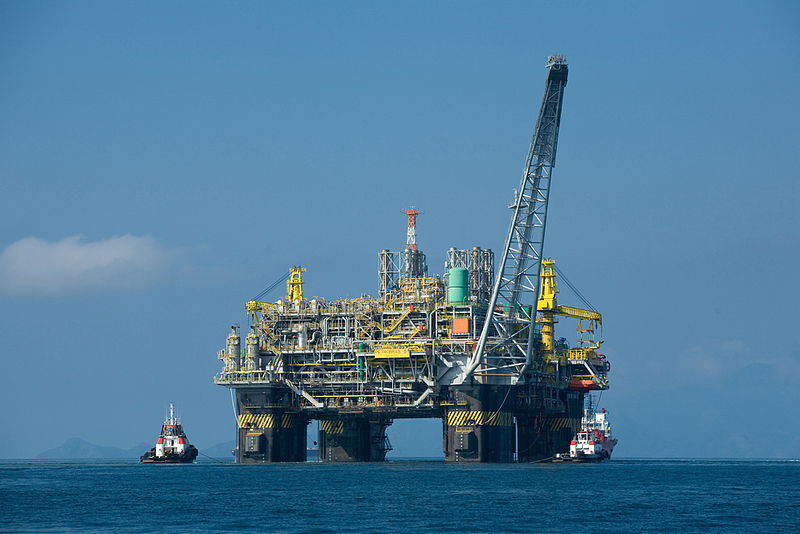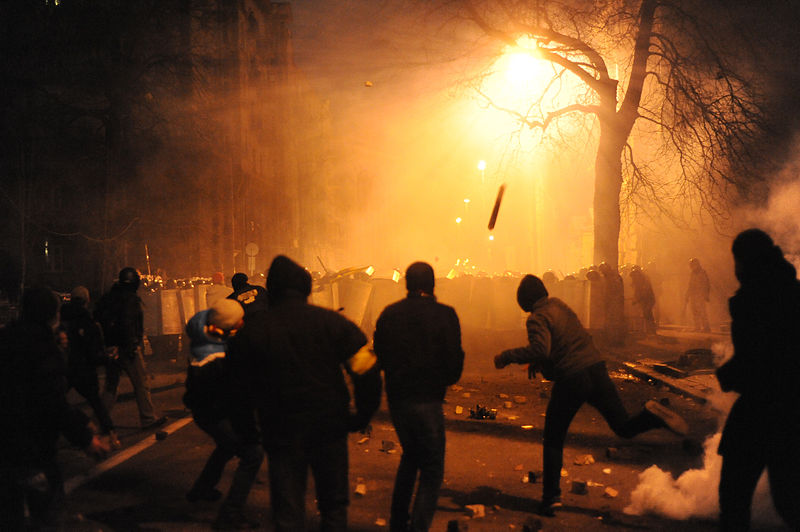The Climate Conference in Paris last year demonstrated that climate change is almost unchallenged as one of the greatest threats of the 21st century. The conference proved to be the forum for a new degree of consensus on the need to keep temperature changes below 2 °C before 2050, and countries submitted ambitious Independent Nationally Determined Contributions (INDCs) to achieving that goal. In addition to directly threatening the planet’s viability and resources, climate change has consequences that contribute to and exacerbate instability by adding the challenge of resource scarcity to existing conflicts.
Contrary to the challenge of climate change, one persistent threat since the later 20th century comes from nuclear proliferation. This presents a conundrum; as the world transitions towards more sustainable energy practices, nuclear energy emerges as an affordable and viable alternative energy option for many of the worlds major greenhouse gas distributors. Yet the political opposition to nuclear energy programs is as strong as the scientific case for them.
Nuclear energy is not technically renewable, because it doesn’t harness energy from sources renewed by natural processes. However, nuclear energy is so sustainable its fuel cycle has virtually no emissions or negative environmental impacts, it can be used in a reactor for several years, and provide reliable supplies of electricity for many consecutive months. Its high energy-to-input fuel ratio also makes it energy and cost efficient. Uranium-235 renews itself through its own fission process. This means that the 1.5 million tonnes of depleted uranium, usually classified as waste, becomes an additional fuel resource.
Regarding issues of safety and disposal, according to the OECD’s Nuclear Energy Agency: “The scientific and technical community generally feels confident that there already exist technical solutions to the spent fuel and nuclear waste conditioning and disposal question… There is a wide consensus on [its] safety and benefits. ” The regulations on nuclear energy waste management are considerably more stringent than those on other emissions.
Leaders can’t ignore their countries’ energy demands, and regardless of their stance on climate change, they may not have the natural resources to rely on solar or wind energy. Instead, new coal plants are still being approved, despite the fact this nullifies the chances of achieving the 2 °C target. Comparatively, uranium is abundant and cheap, and a satisfactorily safe energy source. With the proper initial technological investment, it could be a viable energy option for the future.
Several countries have expressed interest in nuclear energy programs. Despite the stringent regulations on nuclear energy, and the strong nonproliferation regime many others remain opposed to the option on principle and on the basis of who seems interested in developing these programs.
Nuclear weapons use the same materials and technology as commercial nuclear energy, only produced in a certain ‘critical mass’ quantity. ‘Weaponizing’ requires a reactor, which can be commercial or research driven. If there was no commercial use for nuclear energy, there would be no ambiguity about why countries were pursuing these programs.
However, commercial use and the proposals to build reactors are met with heavy skepticism due to the recent history of nuclear proliferation. North Korea, Iraq, France, China, and India all reached breakthrough capacity under the auspices of “peaceful research” programs. Much of the new nuclear power coming online in the next decade will be China and India, which already have nuclear weapons, but are massively expanding their programs for 2020.
Iran is often at the centre of conversation on contentious nuclear programs, but others are seeking to pursue or expand their nuclear energy. One is South Africa, which once had an illegal nuclear stockpile that was dismantled after the end of apartheid. South Korea, whose northern counterpart tests nuclear weapons on a semi-regular basis, has also been seeking nuclear energy expansion as has Turkey, a country which sits in one of the most volatile regions of the world and is engaged in an ongoing protracted conflict with Kurdish peoples in proximity to nuclear armed countries. Other countries seeking these programs include Japan, Vietnam and Ukraine.
All of these countries are among the Climate Action Tracker’s list of largest coal consuming and producing countries and are planning to build at least 5 megawatts of new coal-fire capacity by 2020, destroying the global community’s climate commitments.
Climate change and the demand for an immediate solution is a new challenge to the relatively secure regime that has developed around nuclear non-proliferation. While nuclear energy is not the only alternative energy source, it is more economically sustainable for many of the countries that are expanding their use of coal— in part because their proposed nuclear energy programs face resistance.
Climate change is a threat to everyone, as is unregulated nuclear proliferation. NATO is a major player in non-proliferation regime; the organization is a signatory of the Treaty on the Non-Proliferation of Nuclear Weapons (NPT) and has a staunch deterrence policy that sets the tone of the international community towards the existence and use of nuclear weapons and of nuclear energy. To act responsibly, NATO needs to consider the way in which its nuclear policy interacts with the threat of climate change. This means expanding its traditional engagement with nuclear energy beyond deterrence policies and threats from Russia or others. It needs to also acknowledge the significant role nuclear energy could have in addressing the climate crisis.
There is overwhelming potential in new technologies, such as reactors that use thorium in place of uranium. Thorium generates a comparable energy capacity, and is not a fissile material. Its weapon potential is lower, and it is a more abundant resource in the countries listed above as seeking nuclear programs.
Thorium technology is underdeveloped and requires significant investment, as well as strong leadership to implement responsibly supervised research and development programs. As a leadership organization, NATO could have a substantial role in addressing the climate crisis while maintaining its commitment to security from nuclear threats— but it needs to take the policy steps to get there.
Photo: Courtesy of Agência Brasil Wikimedia Commons. Licensed under CC BY 3.0 BR.
Disclaimer: Any views or opinions expressed in articles are solely those of the authors and do not necessarily represent the views of the NATO Association of Canada.




